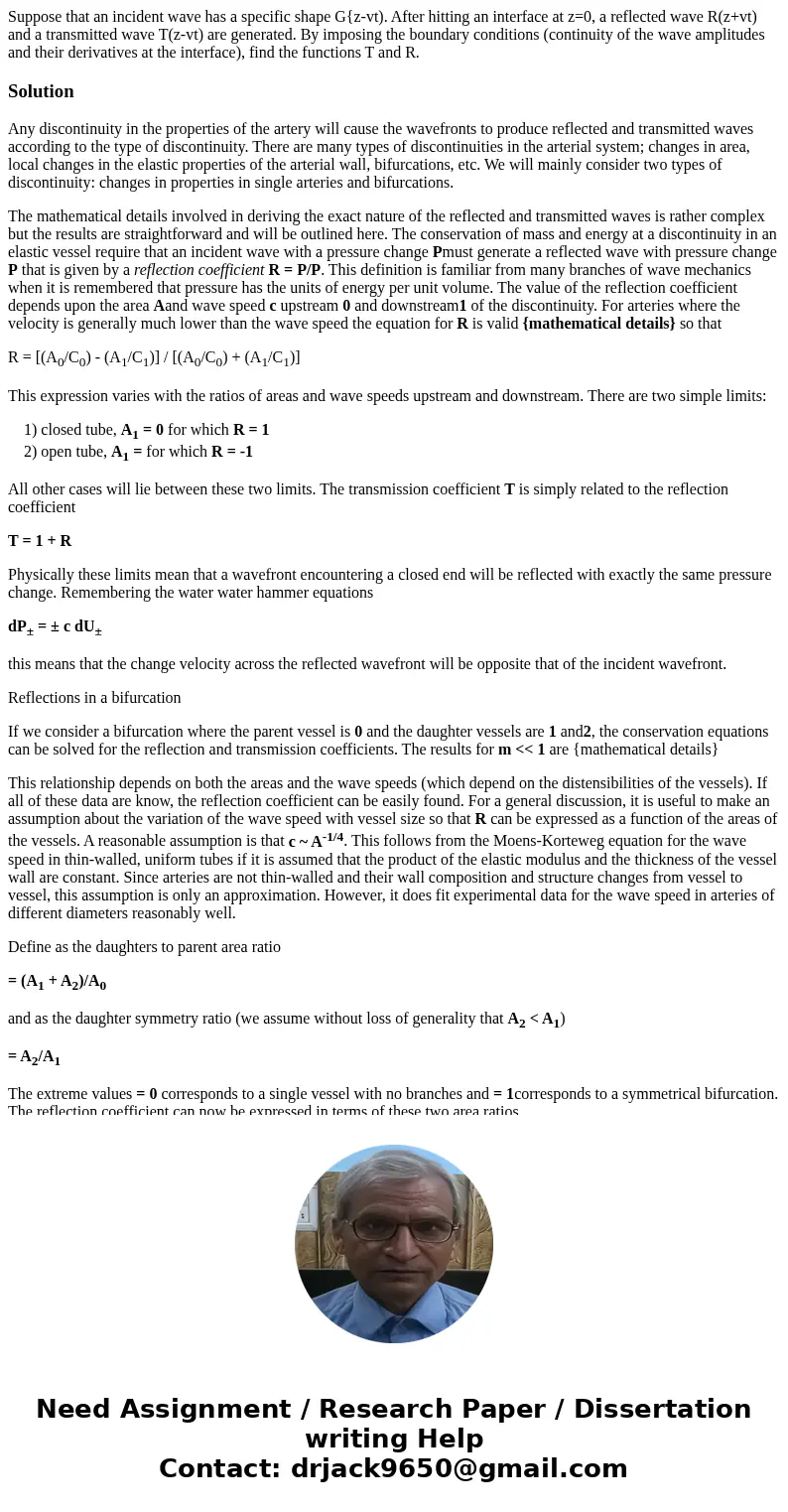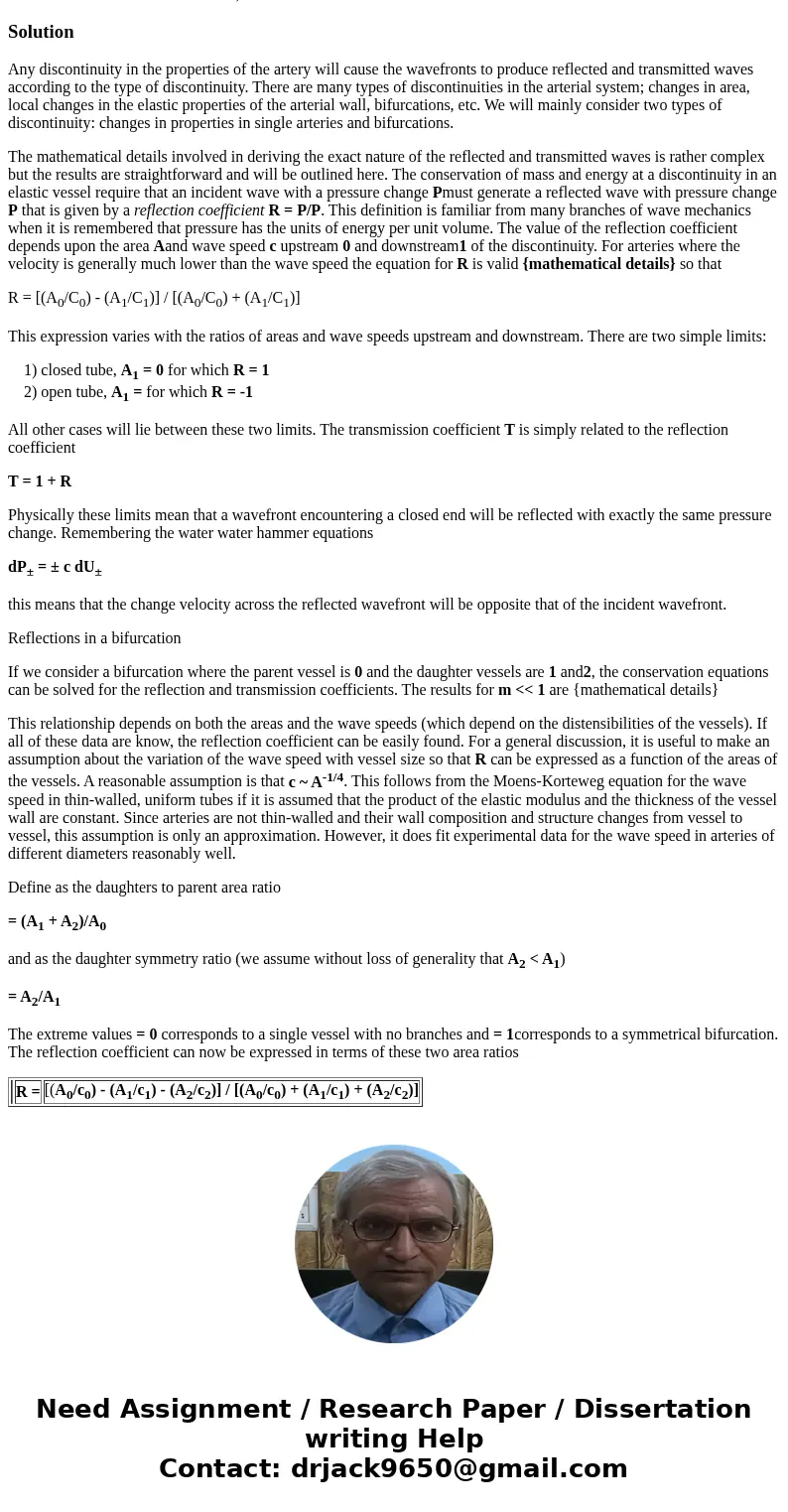Suppose that an incident wave has a specific shape Gzvt Afte
Solution
Any discontinuity in the properties of the artery will cause the wavefronts to produce reflected and transmitted waves according to the type of discontinuity. There are many types of discontinuities in the arterial system; changes in area, local changes in the elastic properties of the arterial wall, bifurcations, etc. We will mainly consider two types of discontinuity: changes in properties in single arteries and bifurcations.
The mathematical details involved in deriving the exact nature of the reflected and transmitted waves is rather complex but the results are straightforward and will be outlined here. The conservation of mass and energy at a discontinuity in an elastic vessel require that an incident wave with a pressure change Pmust generate a reflected wave with pressure change P that is given by a reflection coefficient R = P/P. This definition is familiar from many branches of wave mechanics when it is remembered that pressure has the units of energy per unit volume. The value of the reflection coefficient depends upon the area Aand wave speed c upstream 0 and downstream1 of the discontinuity. For arteries where the velocity is generally much lower than the wave speed the equation for R is valid {mathematical details} so that
R = [(A0/C0) - (A1/C1)] / [(A0/C0) + (A1/C1)]
This expression varies with the ratios of areas and wave speeds upstream and downstream. There are two simple limits:
1) closed tube, A1 = 0 for which R = 1
2) open tube, A1 = for which R = -1
All other cases will lie between these two limits. The transmission coefficient T is simply related to the reflection coefficient
T = 1 + R
Physically these limits mean that a wavefront encountering a closed end will be reflected with exactly the same pressure change. Remembering the water water hammer equations
dP± = ± c dU±
this means that the change velocity across the reflected wavefront will be opposite that of the incident wavefront.
Reflections in a bifurcation
If we consider a bifurcation where the parent vessel is 0 and the daughter vessels are 1 and2, the conservation equations can be solved for the reflection and transmission coefficients. The results for m << 1 are {mathematical details}
This relationship depends on both the areas and the wave speeds (which depend on the distensibilities of the vessels). If all of these data are know, the reflection coefficient can be easily found. For a general discussion, it is useful to make an assumption about the variation of the wave speed with vessel size so that R can be expressed as a function of the areas of the vessels. A reasonable assumption is that c ~ A-1/4. This follows from the Moens-Korteweg equation for the wave speed in thin-walled, uniform tubes if it is assumed that the product of the elastic modulus and the thickness of the vessel wall are constant. Since arteries are not thin-walled and their wall composition and structure changes from vessel to vessel, this assumption is only an approximation. However, it does fit experimental data for the wave speed in arteries of different diameters reasonably well.
Define as the daughters to parent area ratio
= (A1 + A2)/A0
and as the daughter symmetry ratio (we assume without loss of generality that A2 < A1)
= A2/A1
The extreme values = 0 corresponds to a single vessel with no branches and = 1corresponds to a symmetrical bifurcation. The reflection coefficient can now be expressed in terms of these two area ratios
| R = | [(A0/c0) - (A1/c1) - (A2/c2)] / [(A0/c0) + (A1/c1) + (A2/c2)] |


 Homework Sourse
Homework Sourse